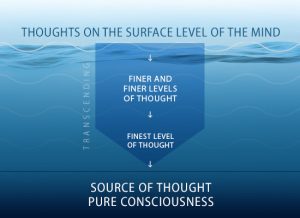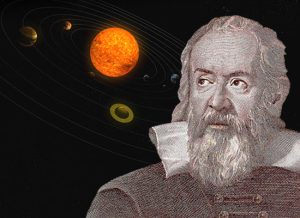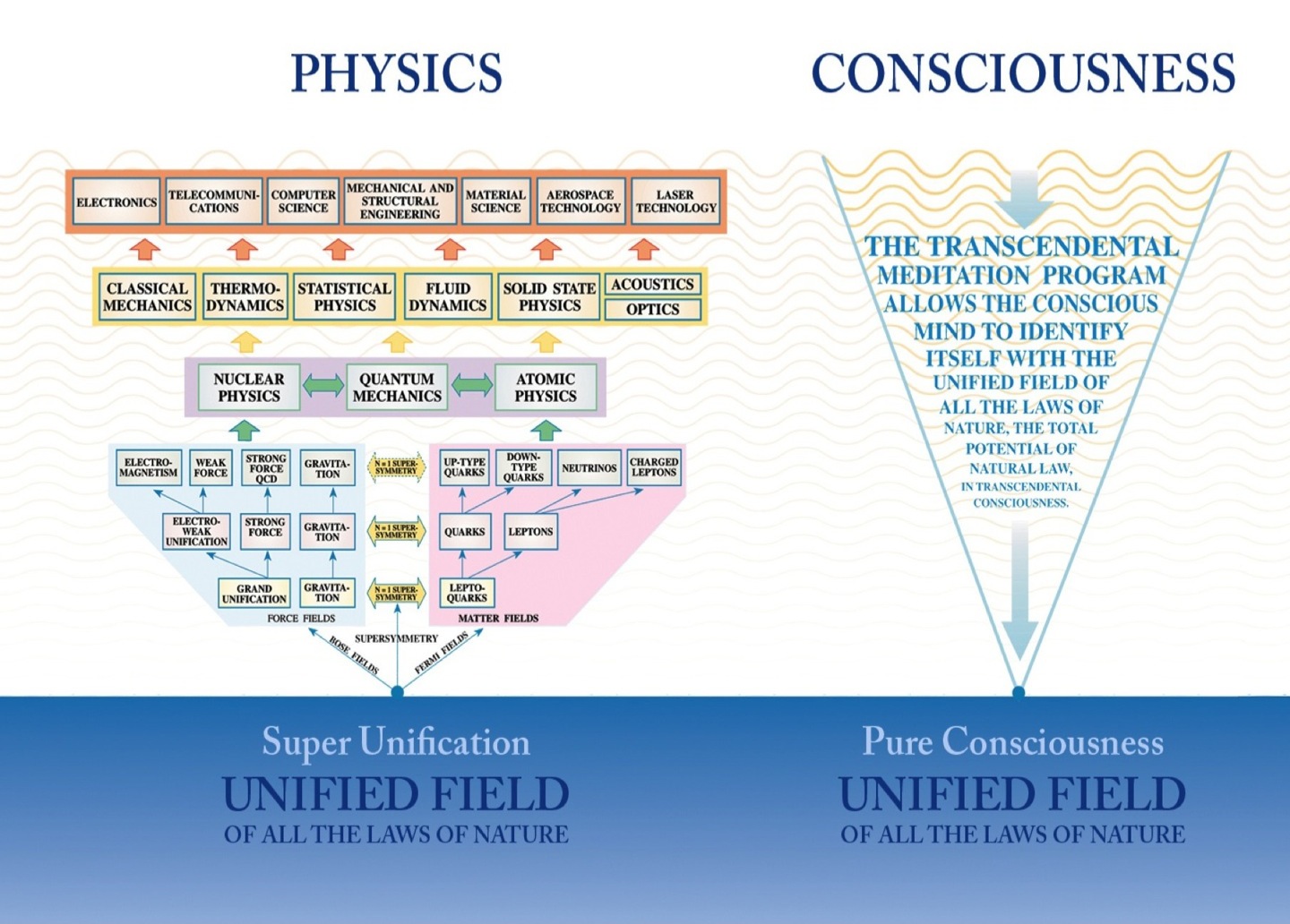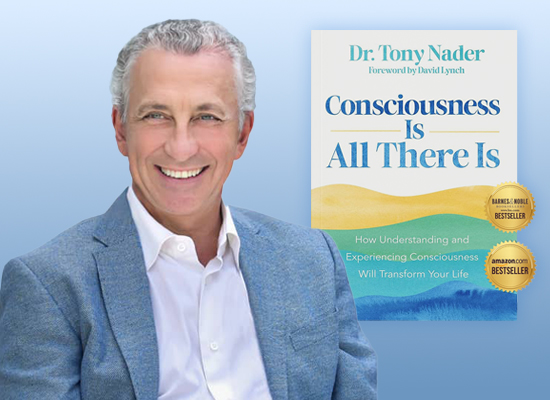Consciousness is that enigmatic force that dwells within each of us, the canvas upon which all our thoughts and emotions dance. It is both the question and the answer, the riddle and the revelation.
—Tony Nader, M.D., Ph.D., M.A.R.R., Consciousness Is All There Is
Consciousness is the most important element of our life. Consciousness enables us to know who we are, to think and to learn, and to achieve and enjoy—it’s the basis of everything.
Our experience of consciousness determines how awake and effective we are on any given day, and how well we perform and meet our goals. It affects all that we do—the clarity of our thoughts and perceptions, our appreciation of others, and the depth of our understanding of what we are learning or expressing.
Consciousness is the foundation for our well-being in all areas of life. As our consciousness develops and expands, we’re able to realize our full potential for greater intelligence, creativity, happiness, success, inner peace, and ultimate fulfillment.
What is consciousness?
What consciousness is and how it emerges has been a topic of philosophical and scientific inquiry for centuries. Consciousness is what allows us to be sentient beings with self-awareness of our inner and outer experience, both interior thoughts and feelings and sensory perception of bodily sensations and the world around us.
We intuitively experience that consciousness is different from matter, different from the body and the physical world. It is subjective rather than objective. We understand this from our lived experience—we know when we’re conscious, awake and aware, but we can’t “touch” that experience in the same way we can interact with the world around us. Consciousness is the subject, the observer, our innermost self.

Consciousness allows us to be sentient beings, aware of ourselves and the world
We also experience different states of consciousness, different degrees of being awake and aware. Over the course of a day we experience waking state, and our consciousness may be more or less alert and clear depending on how rested and healthy we are. At night we experience deep sleep state of consciousness, in which we’re unaware of our body, surroundings, thoughts, or feelings. In dreaming state, our consciousness is filled with illusory thoughts and visual perceptions. These are the three common states that we experience as our own consciousness.
Over time, as we develop from childhood to adulthood, our consciousness also changes. It becomes more expanded, more able to know and experience greater depth and complexity within ourselves and in the world.
Modern science agrees with these basic facts but views consciousness as a mysterious and elusive subject. Among neuroscientists, psychologists, and philosophers, there’s no consensus on exactly what consciousness is or how it comes to be, or even what are the valid means to study a phenomenon that is inherently subjective. Scientific investigation largely focuses on the physical world and the laws that govern it—but consciousness is neither physical nor observable outside ourselves.
Experiencing consciousness in and of itself
Ordinarily, in waking state, our consciousness is occupied by objects of perception, whether external—a computer screen, birds outside, music, other people, etc.—or internal—our thoughts, feelings, concerns, aspirations, etc. The essential nature of our consciousness—the experiencer—is hidden by these external and internal perceptions.
The Transcendental Meditation technique allows us to experience consciousness in a new and different way. When we practice the TM technique, we easily turn our attention within, and the mind naturally and spontaneously settles down—we experience quieter, less active levels of thought and awareness.

During TM practice the mind experiences finer levels of itself
Maharishi Mahesh Yogi, the Founder of the TM program, used an analogy to help us understand this process. The mind is like an ocean—on the surface there are waves, but below the surface there’s less motion and activity, and in the depths there’s stillness and silence. Similarly, on the surface of the mind, waves of thought come and go, but in the depths, there’s stillness and silence.
During our TM practice, the mind easily and effortlessly experiences finer and finer levels of thought, a process known as transcending. Maharishi named this timeless practice Transcendental Meditation, because it allows us to go beyond thought and experience the source of thought itself, or Transcendental Consciousness.
During the TM technique, when we go beyond thought and experience inner wakefulness by itself, whether briefly or for extended periods, we are experiencing consciousness in its simplest state—pure consciousness—unoccupied with objects of perception. This state is also known as unbounded awareness, because consciousness is no longer bound by and identified with the objects of perception.
This state of restful alertness is a unique, fourth state of consciousness, different from ordinary waking, dreaming, or deep sleep states. The easy and effortless practice of the TM technique is a means of self-exploration, a technology for exploring consciousness in and of itself and discovering our true inner nature.
Higher states of consciousness
One of the important things to understand about consciousness is that it can evolve. Consciousness can develop significantly over the span of a human lifetime. When our consciousness expands, we become more aware, more awake, more able to appreciate the subtle details and beauty of our surroundings and those around us. We also experience greater inner calm, stability, and happiness. How does this development of consciousness take place?
The great benefit of practicing the TM technique and transcending twice a day is that when the mind regularly settles down and experiences Transcendental Consciousness—consciousness in and of itself—our body also settles down and gains profound rest. This is due to the natural connection between mind and body.

As the mind settles down during TM practice, the body settles down and experiences deep rest
During our TM practice, when the body gains this state of deep rest—even deeper than sleep—the nervous system is able to dissolve accumulated stress. This process of self-repair leads to better health and enables the nervous system to experience a more awake and joyful state of consciousness and more refined perception in activity as well as during meditation.
This is a unique state of restful alertness, for the mind is fully awake. TM practice allows the brain to function with greater brainwave coherence, as shown on EEG (electroencephalogram) recordings of brain activity. The different areas of our brain are working together in synchrony, which is known as brain integration.
This increased brainwave coherence and integration creates more orderly and effective functioning for both the mind and body. In fact, the TM technique activates our “higher brain,” the prefrontal cortex that is in charge of more complex functions like language, memory, judgment, attention, planning, moral reasoning, and problem-solving. This leads to a fuller expression of our innate intelligence, creativity, and moral reasoning.
This is how we develop higher states of consciousness, by meditating every day, twice a day, to dissolve stress and prevent its accumulation. This alternation of restful alertness during TM with daily activity cultures the nervous system to be able to maintain the experience of silent inner wakefulness along with dynamic activity.

In Cosmic Consciousness a continuum of unbounded inner awareness stays with us at all times
This develops Cosmic Consciousness, the fifth state of consciousness, in which Transcendental Consciousness, the fourth state, is fully experienced and established not only during TM practice but throughout the day. A continuum of unbounded inner awareness stays with us at all times, along with waking, sleep, and dreaming states. The full range of the mind, from active to silent, is now always open to our awareness.
With increasingly refined perception and broader comprehension, the subtler nature of reality opens to our awareness. This culminates in the direct perception or cognition that there is an underlying essence or unity to all that exists, a fundamental field that connects everything. This all-pervading field is the same pure consciousness that we first experienced at the deepest level of our own awareness when we learned the Transcendental Meditation technique.
Paradigm shifts in how we see the world
A paradigm shapes how we see ourselves and helps us understand the fundamental nature of things, which influences our thought and behavior. For example, for centuries, the dominant paradigm held the Earth to be the center of the solar system and the universe. In 1543, when Copernicus discovered the Sun to be the center of the solar system, he brought about a paradigm shift that laid the foundation for the Scientific Revolution and the modern world.

Galileo, the father of classical physics and the scientific method
This new paradigm was championed by Galileo, the father of classical physics and modern science. His work established experimentation and observation as crucial for investigating the laws of nature. The scientific method holds that we can only gain reliable knowledge of nature through objective observation of the physical world and the quantification of what we observe through mathematical formulations. In this materialist view, consciousness is an emergent property of human physiology and brain functioning.
However, a new scientific understanding of consciousness is dawning.
Nearly a century ago, another seismic shift in scientific thought occurred: Quantum mechanics supplanted classical physics as the most successful paradigm for explaining the nature and functioning of our physical world. Central to this new understanding was the discovery that an observer can alter the form and behavior of subatomic particles—simply through the process of observation. As a result, the nature and role of human consciousness itself has become the subject of serious scientific inquiry.
As quantum field theory probed the nature of matter, it discovered that the deepest level of nature’s functioning is not physical at all but is made up of vibrations or fluctuations of nonmaterial, nonlocalized forces and fields (see left side of the chart below). The consensus among physicists today is that nature is unified at its source. Recent unified field theory—often called “the theory of everything”—locates a single, universal field at the basis of all forms and phenomena in the vast universe. Superstring theory goes even further, describing the unified field as a nonmaterial field of infinitely dynamic, self-interacting, and self-aware intelligence.
How does this discovery relate to our subjective experience of consciousness, in waking state or during our TM practice? Is there a unified field of consciousness underlying both the subjective and objective world?
Is Consciousness the unified field?
A new paradigm, as brought to light by Maharishi Mahesh Yogi from the ancient Vedic tradition of knowledge, understands consciousness to be primary and fundamental. Pure consciousness is viewed as the essential nature of life—an unbounded, unified field of pure intelligence, beyond space and time, that gives rise to all expressed values in the universe, both subjective and objective. This field of nature’s intelligence is the unified, transcendental source of all the laws of nature that govern the evolution of human life and the entire universe.
In the seminal paper “Is Consciousness the Unified Field? A Field Theorist’s Perspective” in Modern Science and Vedic Science,1 renowned quantum physicist John Hagelin, Ph.D., considered Maharishi’s proposal that the unified field of modern theoretical physics and the field of pure consciousness are identical:
For the first time in history, Maharishi Mahesh Yogi has provided a highly coherent, theoretical account of what consciousness is and how it relates to the objective field of investigation, and a reliable, systematic method by which consciousness can be directly experienced in its most fundamental state through the Transcendental Meditation technique. Maharishi’s work is based on his revival of the ancient science of consciousness known as Vedic science. According to the Vedic tradition, consciousness is not an emergent property of matter that comes into existence through the functioning of the human nervous system, but is considered fundamental in nature. It is the essential core of life—a vast, unbounded, unified field which gives rise to and pervades all manifest phenomena. —Dr. John Hagelin
Dr. Hagelin explains that Maharishi reformulated the theoretical basis of Vedic knowledge within a scientific framework that is accessible and empirically testable, thus placing Vedic knowledge in a position to enter the intellectual mainstream of the West. This modern scientific formulation of Vedic knowledge is known as Maharishi Vedic Science.
The TM technique allows human awareness to open to and identify itself with the unbounded, universal unified field. At that fundamental, spatially unbounded, unified level of reality, we are all unified. We are intimately and intricately connected as one universal field of consciousness—the unified field.

The discovery of the unified field of all the laws of nature as a dynamic, nonmaterial, self-interacting field of intelligence. (Courtesy of Maharishi International University)
A new paradigm: Consciousness is all there is
The new consciousness paradigm is based on the historic discovery that the Unified Field is a field of consciousness, and that this field of limitless energy, creativity, and intelligence not only gives rise to everything, but can be accessed and harnessed for the good of everyone. The Transcendental Meditation technique is a scientifically verified way to draw upon the unified field for the benefit of the individual and society. This is why Maharishi often referred to the TM program and its advanced programs as technologies of the unified field.
Tony Nader, M.D., Ph.D., M.A.R.R., is a globally recognized expert in the science of consciousness and human development. He worked with Maharishi for 20 years, and was named by Maharishi to be his successor as head of the Transcendental Meditation organizations worldwide.
Now Dr. Nader is making this new paradigm accessible and understandable to the general public in his new book, Consciousness Is All There Is: How Understanding and Experiencing Consciousness Will Transform Your Life (Hay House, 2024).
As Dr. Nader writes,
The paradigm shift proposed in Consciousness Is All There Is represents a monumental transformation in our collective understanding of consciousness. This model shows consciousness to be a dynamic, intelligent field of such magnitude that the techniques for harnessing its power promise to be our most transformative and life-enhancing technologies. In this fresh paradigm, consciousness assumes its rightful place as primary and fundamental, the essence of all existence. —Dr. Tony Nader, Consciousness Is All There Is2

Dr. Tony Nader’s new book, Consciousness Is All There Is (Hay House, 2024).
This groundbreaking book reveals the fundamentals of happiness, health, and fulfillment in a life well-lived and shows how to accomplish it. It dives into both the philosophical logic and supporting science to explain why consciousness must be primary, and matter and energy must be secondary. Dr. Nader shows how you can rise to higher states of consciousness to gain greater freedom and self-reliance, with a profound understanding of how matter, energy, and mind are different aspects of one common reality.
This understanding that the unified field is consciousness has the potential to change the trends of time. When we know that deep within us—and deep within everything—is a field of infinite possibilities, when we know that our deepest inner Self is that same field of cosmic creative intelligence that sustains and maintains the entire universe, the implications for transforming life on earth are enormous.
Notes
- John Hagelin. “Is Consciousness the Unified Field? A Field Theorist’s Perspective.” Modern Science and Vedic Science 1 (1987): 29–87.
- Tony Nader. Consciousness Is All There Is: How Understanding and Experiencing Consciousness Will Transform Your Life. New York: Hay House, 2024, p. xx.




RELATED TOPICS
One Unbounded Ocean of Consciousness by Dr. Tony Nader
Consciousness Is All There Is! What is it and what does it all mean? Find out....
The Body Is Made of Consciousness
Is consciousness a by-product of electrochemical processes? TM Founder Maharishi Mahesh Yogi answers.
Consciousness, Creativity, and the Artist
David Lynch discusses how the artist’s state of consciousness plays a role in the creative process.
Music for Life—Music As Vibrating Consciousness
Acclaimed Italian violinist Alessandra Cuffaro talks about music as a representation of the essence of life—vibrating consciousness.